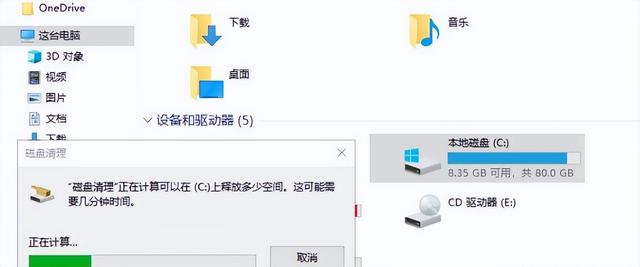接上文:2019 ACOG实践简报:女性性功能障碍(No.213)(上)
译者:谭晓伟 烟台毓璜顶医院
审校:徐晖 山东大学第二医院
雌激素治疗或雌激素受体调节剂治疗对女性性功能障碍的作用是什么?
低剂量雌激素阴道用药是治疗更年期泌尿生殖系统综合征引起的女性性功能障碍的首选治疗方法。低剂量性激素全身用药(单独使用雌激素或与黄体酮联合使用)可作为低剂量雌激素阴道用药的替代方案,用于更年期泌尿生殖系统综合征以及血管舒缩导致阴道性交困难的妇女。奥培米芬片可作为阴道雌激素药物的替代品,用于治疗更年期泌尿生殖系统综合征引起的性交困难。在开始阴道或全身激素治疗前,应进行体格检查以确诊更年期泌尿生殖系统综合征引起的女性性功能障碍。非雌激素过低引起的女性性功能障碍,不推荐使用雌激素或选择性雌激素受体调节剂(SERM)治疗。
对病人拟诊断为更年期泌尿生殖系统综合征及采用雌激素或雌激素受体调节剂治疗前,临床评估是很重要的(67)。更年期泌尿生殖系统综合征的评估包括盆腔检查,检查外阴和阴道解剖结构的变化,包括但不限于阴唇脂肪垫缺失、小阴唇变薄、粘膜变苍白和阴道皱褶的消失 (42)。
阴道片剂、阴道凝胶、阴道软膏和阴道套环对性功能障碍均有相近的疗效,选择哪种制剂应迎合患者的意愿 (68,69)。初次使用阴道雌激素治疗时会发生小剂量雌激素全身吸收,阴道上皮细胞成熟后全身吸收减弱 (70)。低剂量雌激素全身用药也是更年期泌尿生殖器综合症所致性交困难一种有效的治疗(71),然而,低剂量的阴道雌激素用药比低剂量全身雌激素用药(单独应用或与黄体酮联合应用)更适合只有阴道症状的女性(72)因为阴道用药与全身用药效果相近,但阴道用药的雌激素全身吸收更少 (73)。低剂量雌激素全身用药(单独应用或与黄体酮联合应用)是治疗更年期血管舒缩症状最有效的药物(72),是治疗更年期泌尿生殖系统综合征引起的血管舒缩症状合并性交困难症状的合适药物。
一项多组安慰剂随机对照试验(RCT)以及另一个随机对照试验的系统回顾和meta分析发现, 奥培米芬对治疗更年期泌尿生殖系统综合征导致的性交困难具有治疗效果, 奥培米芬是一种选择性雌激素受体调节剂,对生殖道雌激素受体具有选择性激动作用,对乳腺组织雌激素受体具有选择性拮抗作用 (74、75)。2013年,奥培米芬作为全身用药选择性雌激素受体调节剂,被美国食品和药物管理局(FDA)批准用于治疗更年期泌尿生殖系统综合征。虽然奥培米芬在子宫内膜受体具有激动作用,但是在连续使用1年之后,还没有发现奥培米芬与子宫内膜癌或子宫内膜增生有关(76)。只发现一些女性使用奥培米芬可能会出现潮热。
关于雌激素或选择性雌激素受体调节剂用于患有雌激素敏感癌症更年期妇女的治疗的相关研究正在进行当中,研究这些药物是否是安全的,以及应用哪种配方安全。没有充分证据来充分说明这类肿瘤患者应用雌激素阴道制剂的风险和益处。个体化治疗方案应优先考虑患者的意愿和预后,最好能听取肿瘤治疗专家的意见(77,78)。在所有病例中,应以最短的疗程,最低的有效剂量来恢复性功能和减轻症状(73,79)。
雄激素在治疗女性性欲和性唤起障碍方面的作用是什么?
在充分告知患者用药潜在风险及预后不确定性后,患有性欲障碍和性唤起障碍的绝经后妇女,可以选择短期使用经皮吸收睾酮(18,80)。如果应用经皮吸收睾酮治疗绝经后妇女的性欲和性唤起障碍,建议进行3-6月的临床试验,以评估睾酮基础水平,并在首次用药3-6周后检验血雄激素水平,以确保睾酮水平保持在育龄期女性正常范围内 (18)。对于用药6个月后症状无改善患者,应停用经皮吸收睾酮药物。如果持续用药治疗,建议每6个月进行一次随访,进行临床评估和睾酮检测,以评估患者是否发生雄激素过高 (18)。经皮吸收睾酮药物的长期用药安全性和有效性尚未得到研究。
没有证据支持或反对应用睾酮治疗绝经前妇女的性欲和性唤起障碍。脱氢表雄酮(DHEA)全身用药治疗是无效的,因此,不推荐使用脱氢表雄酮治疗女性的性欲/觉醒障碍。其他类型的睾酮是可用的,但数据有限,内分泌学会(18)和北美更年期学会(81)专家共识不支持使用这些类型的睾酮来治疗女性性功能障碍。
经皮吸收睾酮
关于雄激素药物在治疗女性性欲和性唤起障碍方面的安全性和有效性,证据是多种多样的,而FDA并没有批准睾酮药物的这一适应症。对于绝经后的妇女,短期应用经皮吸收睾酮已被证明对性欲减退和觉醒障碍患者有益 (82,86)。对于绝经前妇女,使用睾酮治疗性欲减退和觉醒障碍患者的证据不足(87,88)。妊娠期禁用雄激素,可能对胎儿发育有害(89)。
目前,雄激素治疗性功能障碍,研究最广泛的是以矩形贴片为基质的经皮吸收睾酮 。我们对7个随机对照试验进行回顾性分析 (包括超过3000名女性),使用300毫克经皮吸收睾酮皮肤贴片和安慰剂贴片进行对照研究,评估自然绝经或手术绝经受试者的用药效果,用药组受试者的性快感,性行为,性高潮和性欲都显示有明显增加(80,82 86,90,91)。然而,很少有证据能证明睾酮药物的安全性、有效性,也没有长期用药监测,因为大多数研究没有评估使用6个月以上的患者数据(80,82,86,90,92,93)。
睾酮治疗的主要副作用是多毛、痤疮和男性化(包括音调降低和阴蒂增大)(82,83,90,93,97)。这些副作用可能是不可逆转的,而且睾酮治疗缺乏长期用药的安全数据。2014年的一项系统回顾得出一个结论,尽管长期使用睾酮对心血管疾病风险的影响尚不清楚(80),但是现在没有证据表明经皮睾酮治疗会增加女性患心血管疾病的风险(18)。长期使用睾酮对乳腺癌风险或其他癌症风险也是未知的(80),现有有限的数据主要是关于雌激素联合睾酮药物对乳腺癌风险,而不仅仅是单独应用睾酮的风险(98)。
基于随机对照试验的数据,只要能证明应用雄激素药物治疗6个月是安全和有效的 (80),并符合内分泌学会和北美更年期学会指南(81), 可以考虑在绝经后妇女女性性欲和唤醒障碍(既往性欲减退障碍) 患者身上短期使用经皮肤吸收睾酮药物,并充分告知其用药潜在风险和远期疗效的不确定性。建议用药期间监测血雄激素水平,以防出现雄激素过量(18),但女性经皮吸收睾酮药物治疗的长期安全性和有效性尚未被研究(80,82,86,90,92,93)。我们未发现对未接受睾酮治疗的女性进行常规睾酮水平监测有何临床意义,所以不推荐对未接受雄激素治疗的女性进行雄激素水平常规监测 (18)。
脱氢表雄酮(DHEA)全身用药
脱氢表雄酮(DHEA)全身用药的实验结果尚未显示其对绝经后妇女的性欲和性唤起障碍有治疗效果,所以不推荐使用脱氢表雄酮(DHEA)治疗绝经后女性性功能障碍 (99-101)。2015年,Cochrane的一项安慰剂对照研究表明,DHEA确实可以改善性功能(标准均数差0.31;(95% CI, 0.07-0.55),但影响很小,而且并非所有研究都专注于女性性功能障碍 (101)。没有公开发表的研究评估过DHEA在绝经前妇女性功能障碍患者中的应用。
非激素类药物和设备在治疗女性性欲和性唤起障碍方面的作用是什么?
氟班色林被认为是绝经前无抑郁症妇女性欲低下障碍的一种治疗选择,用药治疗期间需充分告知患者饮酒可能存在的风险。氟班色林是一种5-羟色胺受体激动剂/拮抗剂,2015年被FDA批准用于治疗绝经前无抑郁症女性的性欲减退和性功能障碍。对现有研究的系统回顾和meta分析表明,虽然纳入的研究对象是随机的,但证明其有效性和安全性的证据的总体质量非常低(102)。
研究结果显示,使用氟班色林后,女性性欲减退性功能障碍症状的改善微乎其微,甚至没有改善,平均每月只改善不到一次令人满意的性行为。此外,据报道,临床不良事件却显著增加——最常见的是头晕、嗜睡、恶心和疲劳。虽然研究表明氟班色林也可以轻微改善绝经后妇女性欲减退症状,但该药物目前尚未获得FDA批准用于该人群(103)。氟班色林有一个关于治疗期间饮酒的黑框警告,因为治疗期间饮酒会增加发生晕厥和低血压的风险(104)。处方医生和配药药剂师必须完成风险评估和缓解策略认证(104)。患者和医生还必须填写一份关于氟班色林治疗期间使用酒精的患者供方协议表。这些降低用药风险的要求加上氟班色林的高价格,使患者很难使用该药物治疗性功能障碍。
枸橼酸西地那非
西地那非治疗女性性欲/唤起障碍仍然处于临床试验阶段。枸橼酸西地那非,是一种5型磷酸二酯酶抑制剂,已经接受过评估,但没有被FDA批准用于治疗女性性欲/唤起障碍。虽然有人假设枸橼酸西地那非治疗女性性功能障碍是通过一种类似于男性勃起功能障碍治疗的作用机制,增加骨盆血流量,从而增加阴蒂和阴道血供,但随机临床试验的结果与这种假设是相互矛盾的(105-108)。此外,一些数据显示,使用五羟色胺再摄取抑制剂类药物的女性可能有药物引起的性功能障碍,而不是患有女性性欲和性唤起障碍疾病(109)。据报道,服用西地那非的女性最常见的不良反应是头痛、脸红、消化不良、鼻塞和短暂的视觉障碍(106)。
安非他酮
对于抗抑郁药物引起的女性性功能障碍,补充安非他酮(一种去甲肾上腺素多巴胺再摄取抑制剂)可能改善症状。Cochrane的一篇综述(包括对女性和男性的研究)发现,与应用安慰剂的对照组相比,对因服用抗抑郁药物引起的女性性功能障碍患者添加安非他酮有一定的益处,这是通过女性性功能障碍评定量表得出的结论(标准均数差, 1.60;95% CI,1.40-1.81)(110)。在一项随机对照研究中,研究对象仅包括因五羟色胺再摄取抑制剂诱发性功能障碍的女性患者(N=218),在12周试验结束时,接受较高剂量安非他酮治疗(即每天两次,每次150毫克)的患者在女性性功能指数上的得分显著高于对照组(25.9;95% CI, 22.2–29.4) vs 17.2;95% CI,15.8–20.1) (P=0.01) (111)。此外,治疗组的女性在试验结束时,其性欲更高、性觉醒更好、阴道更润滑、性高潮更强烈和性满意度得分更高。
设备
目前还没有发现任何设备可以有效治疗女性的性欲/觉醒障碍。2000年,FDA批准了一种电池供电的阴蒂吸引装置,旨在通过增加阴蒂血流量和使阴蒂充血来改善性唤起和性高潮 (112)。然而,证明其有效性的证据仅限于几个小型试点研究(113)。目前,它相对于振动器等其他非处方设备的优势尚不清楚。最近一项关于生殖器振动刺激装置的前瞻性研究,虽然不是确定的,但确实证明了在使用这种设备3个月时,受试者性功能、性满意度、性相关的痛苦和生殖器感觉方面都得到了改善;然而,试验没有进行对照研究 (114)。鉴于大多数非处方设备的风险都比较低,卫生保健提供者可能会鼓励他们的病人尝试使用这些设备。
生殖-盆腔痛和阴道插入障碍的治疗方案是什么?
推荐盆底物理疗法用来治疗生殖-盆腔痛和阴道插入障碍,此疗法可以恢复盆底肌肉功能和减少疼痛。阴道脱氢表雄酮制剂、低剂量阴道雌激素和奥培米芬可用于绝经后妇女,用于治疗因更年期泌尿生殖系统综合征引起的中度至重度性交困难。润滑剂、局部麻醉剂和润肤霜可能有助于减轻或缓解性交困难。阴道二氧化碳(CO2)点阵激光用于更年期泌尿生殖系统综合征引起的性交困难得治疗仍处于临床试验阶段。生殖器-盆腔疼痛和阴道插入障碍的治疗需要强调个体化,并需要多学科协作来治疗潜在的和正在恶化的身体和心理方面的问题。各个学科的专家需要包括:性咨询师、临床心理学家、物理治疗师和疼痛科专家(115)。生殖器-盆腔疼痛和阴道插入障碍患者可能伴有心理问题,比如焦虑症(116)。生殖器-盆腔疼痛和阴道插入障碍通常与其他性功能障碍并存,包括性唤起能力降低(117),在更严重的情况中,高潮困难者可能需要额外的干预。虽然详细综述所有性功能障碍的治疗方案超出了本文的范围,但下面我们依然对最常见治疗方式进行综述。想了解更多内容可以查阅更详细的综述 (74,118,119)。
病人教育
关于外阴阴道和盆底解剖的教育可以帮助女性了解生殖器-盆腔疼痛和阴道插入障碍的病因和机制 (119,120)。个人护理咨询应包括消除常见的外阴阴道接触性刺激物,包括肥皂、冲洗液、湿巾、芳香产品和内衣垫(115)。向患者指出消除湿巾或其他刺激物可能有助于改善外阴和肛门周围皮肤炎症性变化。
心理干预
2013年Cochrane对 5个随机对照试验进行回顾性分析,比较了系统脱敏疗法对阴道痉挛的治疗作用 (119)。所有的随机对照试验都具有中或高度风险偏倚,但结果并没有发现其对阴道痉挛有明显的症状改善作用。2013年的一项随机对照试验发现,采用自我阴道扩张和心理治疗相结合的方法,可以提高女性的性交能力(121),这项研究未包含在Cochrane的综述当中。
阴道扩张
采用一些处方的和非处方的阴道扩张器,患者可以进行阴道自我扩张,以减轻阴道痉挛,释放盆底肌肉触发点,或纠正放疗及其他损伤导致的阴道狭窄。一项随机对照试验表明,虽然关于阴道扩张器的最佳使用策略(开 始 时间、持续时间、技术)的文献很少,但是在性伴侣和治疗师的陪同下,结合心理治疗的阴道自我扩张,可以提高阴道痉挛患者性交的能力(121)。因为病人未来可以在家里使用这项技术,所以让病人在办公室里尝试一下这项技术可能会有所帮助。
物理治疗
因阴道痉挛或更常见的盆底功能障碍(包括高音调功能障碍和低雌激素相关的松弛症)导致性交困难的妇女可能受益于盆底物理治疗(64)。物理治疗方法包括腔内(阴道和直肠)及腔外软组织动员和肌筋膜放松;触发点压迫;内脏、泌尿生殖和关节治疗;电刺激;治疗练习;主动盆底训练;生物反馈;膀胱和肠道训练;规范膳食指导;超声波治疗;家庭阴道扩张(115,122,123)。理想情况下,提供妇科评估的临床医生应与接受过经阴道、经肛门(如有必要)和性交困难治疗培训的盆腔物理治疗师合作。女性可能会下意识地收起并长期收缩肛提肌和内收肌,而物理治疗可能会使这些肌肉得到更好的放松。
药物治疗
阴道内脱氢表雄酮 (DHEA制剂)于2016年11月获得FDA批准,用于治疗绝经后女性中度至重度性交困难。在一项为期12周的前瞻性安慰剂随机对照试验中,研究人员对482名绝经后妇女进行了疗效评估。性交困难是外阴阴道萎缩最烦人的症状(124)。一项意向治疗分析发现,与基线相比,用药后患者性交疼痛的严重程度评分降低了1.42个单位,与安慰剂对照组相比降低了0.36个单位。无药物相关的重大不良事件报告。
其他大多数治疗生殖器-盆腔疼痛和阴道插入障碍的药物疗效有限或没有令人信服的证据。其中许多药物用于普通焦虑症,但对生殖器-盆腔痛和阴道插入障碍相关的局部症状没有显示出益处(118,125 - 128)。A型肉毒杆菌毒素的局部治疗仍在研究中,不建议在研究环境之外使用。一些小规模非随机研究检验了将A型肉毒杆菌毒素注射到耻骨直肠肌和耻骨尾骨肌作为治疗性交困难的方法,结果显示,患者自我报告的性交疼痛减少了,但是也出现了一些不良事件,包括注射后的冰冻症状(35%的女性)和外阴刺激症状(一份报告)(129)。在许多情况下,生殖器-盆腔疼痛和阴道插入障碍是可以治疗的,不需要使用更多的这些实验性治疗,这些实验性治疗应该在精心设计的临床试验的背景下进行。
对于更年期泌尿生殖系统综合征的更年期妇女,低剂量阴道雌激素治疗已被证明与全身治疗一样有效(71,130,131),其雌激素全身吸收最少(70)。选择性雌激素受体调节剂奥培米芬对绝经后泌尿生殖系统综合征引起的性交困难也有效(74,75)。然而,没有足够的证据能证明使用全身性雌激素或选择性雌激素受体调节剂治疗非生殖道萎缩性原因引起的女性性功能障碍有效 (132)。
润滑剂
润滑剂和润肤霜不能治疗女性性功能障碍的潜在病因,但它们可能有助于减轻或缓解阴道干涩引起的性交困难。这些产品被FDA归类为化妆品,因为它们不受药物测试的要求,可能含有皮肤刺激物,如对羟基苯甲酸酯和丙二醇,这些皮肤刺激物可能会加剧性交困难。
常用的保湿霜包括透明质酸类和聚卡波菲尔类产品,建议每周定期使用两到三次(133,134)。食品级的润滑油,如椰子油、橄榄油和植物油比合成润肤霜便宜,因此,可能是一个比较合适的选择(134)。然而,这些润滑油和避孕套是不相容的。水基润滑剂可能很快变干,引起生殖道摩擦,可能会导致不适。硅基润滑剂不会引起皮肤干燥,并且与避孕套兼容。现有的证据不足,不能推荐使用一种产品类型,因此,需要重点考虑的是润滑剂与避孕套的兼容性以及患者的敏感性和个人偏好。
阴道二氧化碳点阵激光治疗
阴道二氧化碳(CO2)点阵激光治疗外阴阴道萎缩的安全性、有效性和成本效益尚缺乏充分的研究结论,也没有得到FDA的批准。虽然初步数据显示其对外阴阴道萎缩有一些潜在的好处,但这些研究还没有进行安慰剂对照(135),也没有阐述长期疗效 (135,136)。此外,与其他选择相比,治疗费用较高。我们还需要更多的数据来进一步评估这种手术治疗外阴阴道萎缩的有效性和安全性,尤其是评估其长期疗效(137)。
总结建议
以下建议基于良好和一致的科学证据(A级):
低剂量阴道雌激素治疗是更年期泌尿生殖系统综合征首选的激素治疗方案。
低剂量的全身性激素治疗(单独使用雌激素或与黄体酮联合使用),可作为阴道低剂量雌激素治疗的替代方案,用于治疗更年期泌尿生殖系统综合征相关的阴道性交困难和血管舒缩症状。
奥培米芬可作为阴道雌激素的替代品,用于治疗更年期泌尿生殖系统综合征引起的性交困难。
全身性脱氢表雄酮治疗是无效的,因此,不推荐用于治疗女性的性欲/觉醒障碍。
以下建议基于有限的或不一致的科学证据(B级):
作为女性性功能障碍治疗的一部分,推荐心理干预,包括性技能训练、认知行为治疗(包括或不包括药物治疗)、心智觉知治疗和夫妻治疗。
进行阴道或全身激素治疗前,应进行体格检查,以确诊更年期泌尿生殖系统综合征导致的性功能障碍。
短期使用经皮吸收睾酮被认为是绝经后妇女性欲和唤起障碍的一种治疗选择,治疗前应告知患者可能存在的风险以及长期疗效的不确定性。
没有充分证据支持或反对应用睾酮治疗绝经前妇女的性欲和性唤起障碍 。
西地那非不应用于临床试验之外的女性性欲/觉醒障碍的治疗。
阴道内脱氢表雄酮、低剂量阴道雌激素和奥培米芬可用于绝经后妇女,用于治疗因更年期泌尿生殖系统综合征引起的中度至重度性交困难。
对于非低雌激素状态导致的女性性功能障碍患者,不推荐使用雌激素制剂或选择性雌激素受体调节剂治疗。
对于更年期泌尿生殖系统综合征引起的性交困难,阴道二氧化碳(CO2)点阵激光治疗只能用于试验当中。
氟班色林被认为是绝经前无抑郁症妇女性欲低下障碍的一种治疗选择,应充分告知这些妇女用药期间饮酒可能存在风险。
以下建议主要基于共识和专家意见(C级):
妇产科医师在日常医护随访期间,应该就性功能问题展开临床讨论,以确定可能需要进一步探讨解决的问题,并帮助患者消除对讨论性功能的偏见。
对有女性性功能障碍症状患者的初步评估可能需要较长时间的随访,并应包括全面的病史采集和体格检查,以评估可能的妇科病因。
在最初评估女性性功能障碍时,通常不需要实验室检测,除非怀疑有未诊断的医学病因。
如果经皮吸收睾酮药物用于绝经后性欲和性唤起障碍的妇女,建议3-6个月进行一次检验,以评估基础睾酮水平,初次用药 3-6周后评估睾酮水平,以确保睾酮水平保持在育龄期妇女的正常范围内。对于使用经皮吸收睾酮药物治疗6个月无反应的患者,建议停药。如果继续治疗,建议每6个月进行一次临床评估和睾酮检测,以确定是否发生雄激素过高。经皮吸收睾酮药物的长期安全性和有效性尚未得到研究。
推荐盆底物理疗法治疗生殖器-盆腔痛和阴道插入障碍,以恢复肌肉功能和减少疼痛。
润滑剂、局部麻醉剂和润肤霜可能有助于减少或减轻性交困难。
专家简介

徐晖
徐晖,男,1973年3月出生。1997年6月毕业于山东医科大学临床医学系,获得学士学位,2010年6月毕业于山东大学医学院,获得妇产科硕士学位。自1997年7月至今在在山东大学第二医院妇产科从事临床医疗工作。2013年9月聘为副主任医师。主要擅长妇科肿瘤、微创领域。承担山东省科技厅及卫计委基金项目各一项,迄今在国内外杂志发表论文7篇,SCI收录2篇, 主编专著2部,参编专著7部。
主要社会兼职
1.山东中西医结合学会生殖内分泌专业委员会常务委员
2.山东省微量元素科学研究会妇产科专业委员会第一届委员
3.山东省抗癌协会妇科肿瘤分会首届青年委员会委员
4.山东省医师协会妇科微创医师分会第一届委员会委员
5. 山东省医师协会妇产科医师分会子宫内膜异位症和慢性盆腔痛委员会第一届委员
6. 济南市健康服务促进会常务理事
参考文献
1. American Psychiatric Association. Diagnostic and statistical manual of mental disorders. 5th ed. Arlington (VA): APA; 2013. (Level III)
2. Kingsberg SA. Taking a sexual history. Obstet Gynecol Clin North Am 2006;33:535–47. (Level III)
3. Shifren JL, Monz BU, Russo PA, Segreti A, Johannes CB. Sexual problems and distress in United States women: prevalence and correlates. Obstet Gynecol 2008;112:970–8. (Level II-3)
4. Kinsey AC. Sexual behavior in the human female. Philadelphia (PA): Saunders; 1953. (Level III)
5. Masters WH, Johnson VE. Human sexual response. Boston (MA): Little, Brown and Company; 1966. (Level III)
6. Kaplan HS. Disorders of sexual desire and other new concepts and techniques in sex therapy. New York (NY): Simon and Schuster; 1979. (Level III)
7. Basson R. Sexuality and sexual disorders. Clin Update Womens Health Care 2014;XIII(2):1–108. (Level III)
8. Archer JS, Love-Geffen TE, Herbst-Damm KL, Swinney DA, Chang JR. Effect of estradiol versus estradiol and testosterone on brain-activation patterns in postmenopausal women. Menopause 2006;13:528–37. (Level III)
9. Davis SR, Guay AT, Shifren JL, Mazer NA. Endocrine aspects of female sexual dysfunction. J Sex Med 2004;1: 82–6. (Level III)
10. Kingsberg SA, Clayton AH, Pfaus JG. The female sexual response: current models, neurobiological underpinnings and agents currently approved or under investigation for the treatment of hypoactive sexual desire disorder. CNS Drugs 2015;29:915–33. (Level III)
11. Salonia A, Giraldi A, Chivers ML, Georgiadis JR, Levin R, Maravilla KR, et al. Physiology of women’s sexual function: basic knowledge and new findings. J Sex Med 2010;7:2637–60. (Level III)
12. Portman DJ, Gass ML. Genitourinary syndrome of menopause: new terminology for vulvovaginal atrophy from the International Society for the Study of Women’s Sexual Health and the North American Menopause Society. Vulvovaginal Atrophy Terminology Consensus Conference Panel. Menopause 2014;21:1063–8. (Level III)
13. Burger HG, Papalia MA. A clinical update on female androgen insufficiency—testosterone testing and treatment in women presenting with low sexual desire. Sex Health 2006;3:73–8. (Level III)
14. Davison SL, Bell R, Donath S, Montalto JG, Davis SR. Androgen levels in adult females: changes with age, menopause, and oophorectomy. J Clin Endocrinol Metab 2005;90:3847–53. (Level II-3)
15. Kingsberg SA. The impact of aging on sexual function in women and their partners. Arch Sex Behav 2002;31:431– 7. (Level III)
16. Santoro N, Torrens J, Crawford S, Allsworth JE, Finkelstein JS, Gold EB, et al. Correlates of circulating androgens in mid-life women: the study of women’s health across the nation. J Clin Endocrinol Metab 2005; 90:4836–45. (Level II-3)
17. Davis SR, Davison SL, Donath S, Bell RJ. Circulating androgen levels and self-reported sexual function in women. JAMA 2005;294:91–6. (Level II-3)
18. Wierman ME, Arlt W, Basson R, Davis SR, Miller KK, Murad MH, et al. Androgen therapy in women: a reappraisal: an Endocrine Society clinical practice guideline. J Clin Endocrinol Metab 2014;99:3489–510. (Systematic Review)
19. Abdool Z, Thakar R, Sultan AH. Postpartum female sexual function. Eur J Obstet Gynecol Reprod Biol 2009;145: 133–7. (Level III)
20. Cabral PU, Canario AC, Spyrides MH, Uchoa SA, Eleuterio J Jr, Goncalves AK. Determinants of sexual dysfunction among middle-aged women. Int J Gynaecol Obstet 2013;120:271–4. (Level II-3)
21. Dean J, Rubio-Aurioles E, McCabe M, Eardley I, Speakman M, Buvat J, et al. Integrating partners into erectile dysfunction treatment: improving the sexual experience for the couple. Int J Clin Pract 2008;62:127–33. (Level III)
22. Galazka I, Drosdzol-Cop A, Naworska B, Czajkowska M, Skrzypulec-Plinta V. Changes in the sexual function during pregnancy. J Sex Med 2015;12:445–54. (Level II-2)
23. Kalmbach DA, Arnedt JT, Pillai V, Ciesla JA. The impact of sleep on female sexual response and behavior: a pilot study. J Sex Med 2015;12:1221–32. (Level II-2)
24. McCabe MP, Sharlip ID, Lewis R, Atalla E, Balon R, Fisher AD, et al. Risk factors for sexual dysfunction among women and men: a consensus statement from the Fourth International Consultation on Sexual Medicine 2015. J Sex Med 2016;13:153–67. (Level III)
25. Ter Kuile MM, Vigeveno D, Laan E. Preliminary evidence that acute and chronic daily psychological stress affect sexual arousal in sexually functional women. Behav Res Ther 2007;45:2078–89. (Level I) 26. Wiederman MW. Women’s body image selfconsciousness during physical intimacy with a partner. J Sex Res 2000;37:60–8. (Level II-3)
27. Basson R, Leiblum S, Brotto L, Derogatis L, Fourcroy J, Fugl-Meyer K, et al. Revised definitions of women’s sexual dysfunction. J Sex Med 2004;1:40–8. (Level III)
28. Rosen RC, Shifren JL, Monz BU, Odom DM, Russo PA, Johannes CB. Correlates of sexually related personal distress in women with low sexual desire. J Sex Med 2009;6: 1549–60. (Level II-2)
29. Serretti A, Chiesa A. Treatment-emergent sexual dysfunction related to antidepressants: a meta-analysis. J Clin Psychopharmacol 2009;29:259–66. (Meta-analysis)
30. Berg RC, Underland V, Odgaard-Jensen J, Fretheim A, Vist GE. Effects of female genital cutting on physical health outcomes: a systematic review and meta-analysis. BMJ Open 2014;4:e006316. (Systematic Review and Meta-analysis)
31. Basson R. Female sexual response: the role of drugs in the management of sexual dysfunction [published erratum appears in Obstet Gynecol 2001;98:522]. Obstet Gynecol 2001;98:350–3. (Level III) 32. Steege JF, Zolnoun DA. Evaluation and treatment of dyspareunia. Obstet Gynecol 2009;113:1124–36. (Level III)
33. Macleod M, Goyder K, Howarth L, Bahl R, Strachan B, Murphy DJ. Morbidity experienced by women before and after operative vaginal delivery: prospective cohort study nested within a two-centre randomised controlled trial of restrictive versus routine use of episiotomy. BJOG 2013; 120:1020–6. (Level I)
34. McDonald E, Woolhouse H, Brown SJ. Consultation about sexual health issues in the year after childbirth: a cohort study. Birth 2015;42:354–61. (Level II-2)
35. McDonald EA, Gartland D, Small R, Brown SJ. Dyspareunia and childbirth: a prospective cohort study. BJOG 2015;122:672–9. (Level II-2)
36. Signorello LB, Harlow BL, Chekos AK, Repke JT. Postpartum sexual functioning and its relationship to perineal trauma: a retrospective cohort study of primiparous women. Am J Obstet Gynecol 2001;184:881–8; discussion 888–90. (Level II-2)
37. DeJudicibus MA, McCabe MP. Psychological factors and the sexuality of pregnant and postpartum women. J Sex Res 2002;39:94–103. (Level II-3)
38. Screening for perinatal depression. ACOG Committee Opinion No. 757. American College of Obstetricians and Gynecologists. Obstet Gynecol 2018;132:e208–12. (Level III)
39. Intimate partner violence. Committee Opinion No. 518. American College of Obstetricians and Gynecologists. Obstet Gynecol 2012;119:412–7. (Level III)
40. Santoro N, Komi J. Prevalence and impact of vaginal symptoms among postmenopausal women. J Sex Med 2009;6:2133–42. (Level II-3)
41. Nappi RE, Kokot-Kierepa M. Vaginal Health: Insights, Views & Attitudes (VIVA) - results from an international survey. Climacteric 2012;15:36–44. (Level II-3)
42. Faubion SS, Sood R, Kapoor E. Genitourinary syndrome of menopause: management strategies for the clinician. Mayo Clin Proc 2017;92:1842–9. (Level III)
43. Management of symptomatic vulvovaginal atrophy: 2013 position statement of The North American Menopause Society. Menopause 2013;20:888-902; quiz 903–4. (Level III)
44. Sexual health. Committee Opinion No. 706. American College of Obstetricians and Gynecologists. Obstet Gynecol 2017;130:e42–7. (Level III)
45. Simon JA, Lukas VA. Distressing sexual function at midlife: unmet needs, practical diagnoses, and available treatments. Obstet Gynecol 2017;130:889–905. (Level III)
46. Kingsberg S. Just ask! Talking to patients about sexual function. Sex Reprod Menopause 2004;2:199–203. (Level III)
47. Flynn KE, Lindau ST, Lin L, Reese JB, Jeffery DD, Carter J, et al. Development and validation of a singleitem screener for self-reporting sexual problems in U.S. adults. J Gen Intern Med 2015;30:1468–75. (Level II-2)
48. Parish SJ, Hahn SR. Hypoactive sexual desire disorder: a review of epidemiology, biopsychology, diagnosis, and treatment. Sex Med Rev 2016;4:103–20. (Level III)
49. Althof SE, Rosen RC, Perelman MA, Rubio-Aurioles E. Standard operating procedures for taking a sexual history. J Sex Med 2013;10:26–35. (Level III)
50. Hatzichristou D, Rosen RC, Derogatis LR, Low WY, Meuleman EJ, Sadovsky R, et al. Recommendations for the clinical evaluation of men and women with sexual dysfunction. J Sex Med 2010;7:337–48. (Level III)
51. Nusbaum MR, Hamilton CD. The proactive sexual health history. Am Fam Physician 2002;66:1705–12. (Level III)
52. Reproductive and sexual coercion. Committee Opinion No. 554. American College of Obstetricians and Gynecologists. Obstet Gynecol 2013;121:411–5. (Level III)
53. Latif 电脑 EZ, Diamond MP. Arriving at the diagnosis of female sexual dysfunction. Fertil Steril 2013;100:898– 904. (Level III)
54. Rosen R, Brown C, Heiman J, Leiblum S, Meston C, Shabsigh R, et al. The Female Sexual Function Index (FSFI): a multidimensional self-report instrument for the assessment of female sexual function. J Sex Marital Ther 2000;26:191–208. (Level 111)
55. Derogatis LR, Rosen R, Leiblum S, Burnett A, Heiman J. The Female Sexual Distress Scale (FSDS): initial validation of a standardized scale for assessment of sexually related personal distress in women. J Sex Marital Ther 2002;28:317–30. (Level III)
56. Lindau ST, Abramsohn EM, Baron SR, Florendo J, Haefner HK, Jhingran A, et al. Physical examination of the female cancer patient with sexual concerns: What oncologists and patients should expect from consultation with a specialist. CA Cancer J Clin 2016;66:241–63. (Level III)
57. Witzeman K, Nguyen RH, Eanes A, As-Sanie S, Zolnoun D. Mucosal 电脑 versus muscle pain sensitivity in provoked vestibulodynia. J Pain Res 2015;8:549–55. (Level II-2)
58. Vieira-Baptista P, Lima-Silva J, Beires J, Donders G. Women without vulvodynia can have a positive “Q-tip test”: a cross sectional study. J Psychosom Obstet Gynaecol 2017;38:256–9. (Level II-3)
59. Heiman JR, Meston CM. Empirically validated treatment for sexual dysfunction. Annu Rev Sex Res 1997;8:148– 94. (Level III)
60. Meston CM, Levin RJ, Sipski ML, Hull EM, Heiman JR. Women’s orgasm. Annu Rev Sex Res 2004;15:173–257. (Level III)
61. Brotto L, Atallah S, Johnson-Agbakwu C, Rosenbaum T, Abdo C, Byers ES, et al. Psychological and interpersonal dimensions of sexual function and dysfunction. J Sex Med 2016;13:538–71. (Systematic Review)
62. Zoldbrod AP. Sexual issues in treating trauma survivors. Curr Sex Health Rep 2015;7:3–11. (Level III) 63. Fruhauf S, Gerger H, Schmidt HM, Munder T, Barth J. Efficacy of psychological interventions for sexual 电脑 dysfunction: a systematic review and meta-analysis. Arch Sex Behav 2013;42:915–33. (Systematic Review)
64. Faubion SS, Rullo JE. Sexual dysfunction in women: a practical approach [published erratum appears in Am Fam Physician 2016;94:189]. Am Fam Physician 2015; 92:281–8. (Level III)
65. Gunzler C, Berner MM. Efficacy of psychosocial interventions in men and women with sexual dysfunctions— a systematic review of controlled clinical trials: part 2— the efficacy of psychosocial interventions for female sexual dysfunction. J Sex Med 2012;9:3108–25. (Systematic Review)
66. Brotto LA, Basson R, Luria M. A mindfulness-based group psychoeducational intervention targeting sexual arousal disorder in women. J Sex Med 2008;5:1646–59. (Level II-3)
67. Lindau ST, Dude A, Gavrilova N, Hoffmann JN, Schumm LP, McClintock MK. Prevalence and correlates of vaginal estrogenization in postmenopausal women in the United States. Menopause 2017;24:536–45. (Level II-2)
68. Lethaby A, Ayeleke RO, Roberts H. Local oestrogen for vaginal atrophy in postmenopausal women. Cochrane Database of Systematic Reviews 2016, Issue 8. Art. No.: CD001500. DOI: 10.1002/14651858.CD001500. pub3. (Systematic Review)
69. Mitchell CM, Reed SD, Diem S, Larson JC, Newton KM, Ensrud KE, et al. Efficacy of vaginal estradiol or vaginal moisturizer vs placebo for treating postmenopausal vulvovaginal symptoms: a randomized clinical trial. JAMA Intern Med 2018;178:681–90. (Level I)
70. Santen RJ. Vaginal administration of estradiol: effects of dose, preparation and timing on plasma estradiol levels. Climacteric 2015;18:121–34. (Level III)
71. Rahn DD, Carberry C, Sanses TV, Mamik MM, Ward RM, Meriwether KV, et al. Vaginal estrogen for genitourinary syndrome of menopause: a systematic review. Society of Gynecologic Surgeons Systematic Review Group. Obstet Gynecol 2014;124:1147–56. (Systematic Review)
72. Management of menopausal symptoms. Practice Bulletin No. 141. American College of Obstetricians and Gynecologists [published erratum appears in Obstet Gynecol 2016;127:166]. Obstet Gynecol 2014;123:202–16. (Level III)
73. The 2017 hormone therapy position statement of The North American Menopause Society. The
NAMS 2017Hormone Therapy Position Statement Advisory Panel. Menopause 2017;24:728–53. (Level III)
74. Cui Y, Zong H, Yan H, Li N, Zhang Y. The efficacy and safety of ospemifene in treating dyspareunia associated with postmenopausal vulvar and vaginal atrophy: a systematic review and meta-analysis. J Sex Med 2014;11: 487–97. (Systematic Review)
75. Portman D, Palacios S, Nappi RE, Mueck AO. Ospemifene, a non-oestrogen selective oestrogen receptor modulator for the treatment of vaginal dryness associated with postmenopausal vulvar and vaginal atrophy: a randomised, placebo-controlled, phase III trial. Maturitas 2014;78:91– 8. (Level I)
76. Constantine GD, Goldstein SR, Archer DF. Endometrial safety of ospemifene: results of the phase 2/3 clinical development program. Menopause 2015;22:36–43. (Level II-1)
77. The use of vaginal estrogen in women with a history of estrogen-dependent breast cancer. Committee Opinion No. 659. American College of Obstetricians and Gynecologists. Obstet Gynecol 2016;127:e93–6. (Level III)
78. Management of gynecologic issues in women with breast cancer. Practice Bulletin No. 126. American College of Obstetricians and Gynecologists. Obstet Gynecol 2012; 119:666–82. (Level III)
79. Notelovitz M, Funk S, Nanavati N, Mazzeo M. Estradiol absorption from vaginal tablets in postmenopausal women. Obstet Gynecol 2002;99:556–62. (Level I)
80. Achilli C, Pundir J, Ramanathan P, Sabatini L, Hamoda H, Panay N. Efficacy and safety of transdermal testosterone in postmenopausal women with hypoactive sexual desire disorder: a systematic review and meta-analysis. Fertil Steril 2017;107:475–82.e15. (Systematic Review and Meta-analysis)
81. Shifren JL, Gass ML. The North American Menopause Society recommendations for clinical care of midlife women. NAMS Recommendations for Clinical Care of Midlife Women Working Group. Menopause 2014;21: 1038–62. (Level III)
82. Braunstein GD, Sundwall DA, Katz M, Shifren JL, Buster JE, Simon JA, et al. Safety and efficacy of a testosterone patch for the treatment of hypoactive sexual desire disorder in surgically menopausal women: a randomized, placebo-controlled trial. Arch Intern Med 2005;165: 1582–9. (Level I)
83. Buster JE, Kingsberg SA, Aguirre O, Brown C, Breaux JG, Buch A, et al. Testosterone patch for low sexual desire in surgically menopausal women: a randomized trial. Obstet Gynecol 2005;105:944–52. (Level I)
84. Davis SR, van der Mooren MJ, van Lunsen RH, Lopes P, Ribot C, Rees M, et al. Efficacy and safety of a testosterone patch for the treatment of hypoactive sexual desire disorder in surgically menopausal women: a randomized, placebo-controlled trial [published erratum appears in Menopause 2006;13:850]. Menopause 2006;13:387–96. (Level I)
85. Shifren JL, Davis SR, Moreau M, Waldbaum A, Bouchard C, DeRogatis L, et al. Testosterone patch for the treatment of hypoactive sexual desire disorder in naturally menopausal women: results from the INTIMATE NM1 Study [published erratum appears in Menopause 2007;14:157]. Menopause 2006;13:770–9. (Level I)
86. Simon J, Braunstein G, Nachtigall L, Utian W, Katz M, Miller S, et al. Testosterone patch increases sexual activity and desire in surgically menopausal women with hypoactive sexual desire disorder. J Clin Endocrinol Metab 2005; 90:5226–33. (Level I)
87. Davis S, Papalia MA, Norman RJ, O’Neill S, Redelman M, Williamson M, et al. Safety and efficacy of a testosterone metered-dose transdermal spray for treating decreased sexual satisfaction in premenopausal women: a randomized trial. Ann Intern Med 2008;148:569–77. (Level I)
88. Goldstat R, Briganti E, Tran J, Wolfe R, Davis SR. Transdermal testosterone therapy improves well-being, mood, and sexual function in premenopausal women. Menopause 2003;10:390–8. (Level II-3)
89. Hakim C, Padmanabhan V, Vyas AK. Gestational hyperandrogenism in developmental programming. Endocrinology 2017;158:199–212. (Level III)
90. Davis SR, Moreau M, Kroll R, Bouchard C, Panay N, Gass M, et al. Testosterone for low libido in postmenopausal women not taking estrogen. APHRODITE Study Team. N Engl J Med 2008;359:2005–17. (Level I)
91. Panay N, Al-Azzawi F, Bouchard C, Davis SR, Eden J, Lodhi I, et al. Testosterone treatment of HSDD in naturally menopausal women: the ADORE study. Climacteric 2010;13:121–31. (Level I)
92. Davis SR, McCloud P, Strauss BJ, Burger H. Testosterone enhances estradiol’s effects on postmenopausal bone density and sexuality. Maturitas 2008;61:17–26. (Level I)
93. Nachtigall L, Casson P, Lucas J, Schofield V, Melson C, Simon JA. Safety and tolerability of testosterone patch therapy for up to 4 years in surgically menopausal women receiving oral or transdermal oestrogen. Gynecol Endocrinol 2011;27:39–48. (Level I)
94. Lobo RA, Rosen RC, Yang HM, Block B, Van Der Hoop RG. Comparative effects of oral esterified estrogens with and without methyltestosterone on endocrine profiles and dimensions of sexual function in postmenopausal women with hypoactive sexual desire. Fertil Steril 2003;79:1341– 52. (Level I)
95. Sherwin BB. Use of combined estrogen-androgen preparations in the postmenopause: evidence from clinical studies. Int J Fertil Womens Med 1998;43:98–103. (Level III)
96. Davis SR, Braunstein GD. Efficacy and safety of testosterone in the management of hypoactive sexual desire disorder in postmenopausal women. J Sex Med 2012;9: 1134–48. (Level III)
97. Urman B, Pride SM, Yuen BH. Elevated serum testosterone, hirsutism, and virilism associated with combined androgen-estrogen hormone replacement therapy. Obstet Gynecol 1991;77:595–8. (Level III) 98. Ness RB, Albano JD, McTiernan A, Cauley JA. Influence of estrogen plus testosterone supplementation on breast cancer. Arch Intern Med 2009;169:41–6. (Level II-2)
99. Elraiyah T, Sonbol MB, Wang Z, Khairalseed T, Asi N, Undavalli C, et al. Clinical review: the benefits and harms of Obstetricians and Gynecologists. Published by Wolters Kluwer Health, Inc. Unauthorized reproduction of this article is prohibited.
100. Panjari M, Bell RJ, Jane F, Wolfe R, Adams J, Morrow C, et al. A randomized trial of oral DHEA treatment for sexual function, well-being, and menopausal symptoms in postmenopausal women with low libido. J Sex Med 2009;6:2579–90. (Level I)
101. Scheffers CS, Armstrong S, Cantineau AE, Farquhar C, Jordan V. Dehydroepiandrosterone for women in the perior postmenopausal phase. Cochrane Database of Systematic Reviews 2015, Issue 1. Art. No.: CD011066. DOI: 10.1002/14651858.CD011066.pub2. (Systematic Review and Meta-analysis) 102. Jaspers L, Feys F, Bramer WM, Franco OH, Leusink P, Laan ET. Efficacy and safety of flibanserin for the treatment of hypoactive sexual desire disorder in women: a systematic review and meta-analysis. JAMA Intern Med 2016;176:453–62. (Systematic Review and Metaanalysis)
103. Simon JA, Kingsberg SA, Shumel B, Hanes V, Garcia M Jr, Sand M. Efficacy and safety of flibanserin in postmenopausal women with hypoactive sexual desire disorder: results of the SNOWDROP trial. Menopause 2014;21: 633–40. (Level I)
104. ADDY (flibanserin) tablets 100 mg. Raleigh (NC): Sprout Pharmaceuticals, Inc; 2018. Available at: https:// addyi.com/assets/pdf/Addyi_full_prescribing_info.pdf. Retrieved February 26, 2019. (Level III)
105. Basson R, Brotto LA. Sexual psychophysiology and effects of sildenafil citrate in oestrogenised women with acquired genital arousal disorder and impaired orgasm: a randomised controlled trial. BJOG 2003;110:1014–24. (Level I)
106. Basson R, McInnes R, Smith MD, Hodgson G, Koppiker N. Efficacy and safety of sildenafil citrate in women with sexual dysfunction associated with female sexual arousal disorder. J Womens Health Gend Based Med 2002;11: 367–77. (Level I)
107. Berman JR, Berman LA, Toler SM, Gill J, Haughie S. Safety and efficacy of sildenafil citrate for the treatment of female sexual arousal disorder: a double-blind, placebo controlled study. Sildenafil Study Group. J Urol 2003; 170:2333–8. (Level I)
108. Caruso S, Intelisano G, Lupo L, Agnello C. Premenopausal women affected by sexual arousal disorder treated with sildenafil: a double-blind, cross-over, placebocontrolled study. BJOG 2001;108:623–8. (Level II-3)
109. Nurnberg HG, Hensley PL, Heiman JR, Croft HA, Debattista C, Paine S. Sildenafil treatment of women with antidepressant-associated sexual dysfunction: a randomized controlled trial. JAMA 2008;300:395–404. (Level I)
110. Taylor MJ, Rudkin L, Bullemor‐Day P, Lubin J, Chukwujekwu C, Hawton K. Strategies for managing sexual dysfunction induced by antidepressant medication. Cochrane Database of Systematic Reviews 2013, Issue 5. Art. No.: CD003382. DOI: 10.1002/14651858. CD003382.pub3.(Systematic Review and Meta-analysis)
111. Safarinejad MR. Reversal of SSRI-induced female sexual dysfunction by adjunctive bupropion in menstruating women: a double-blind, placebo-controlled and randomized study. J Psychopharmacol 2011;25:370–8. (Level I)
112. Wilson SK, Delk JR 2nd, Billups KL. Treating symptoms of female sexual arousal disorder with the Eros-Clitoral Therapy Device. J Gend Specif Med 2001;4:54–8. (Level III)
113. Billups KL. The role of mechanical devices in treating female sexual dysfunction and enhancing the female sexual response. World J Urol 2002;20:137–41. (Level III)
114. Guess MK, Connell KA, Chudnoff S, Adekoya O, Richmond C, Nixon KE, et al. The effects of a genital vibratory stimulation device on sexual function and genital sensation. Female Pelvic Med Reconstr Surg 2017;23: 256–62. (Level II-2)
115. Persistent vulvar pain. Committee Opinion No. 673. American College of Obstetricians and Gynecologists. Obstet Gynecol 2016;128:e78–84. (Level III)
116. Paquet M, Rosen NO, Steben M, Mayrand MH, SanterreBaillargeon M, Bergeron S. Daily anxiety and depressive symptoms in couples coping with vulvodynia: associations with women’s pain, women’s sexual function, and both partners’ sexual distress. J Pain 2018;19:552–61. (Level II-3)
117. Melles RJ, Dewitte MD, Ter Kuile MM, Peters MM, de Jong PJ. Attentional bias for pain and sex, and automatic appraisals of sexual penetration: differential patterns in dyspareunia vs vaginismus? J Sex Med 2016;13:1255– 62. (Level II-1)
118. Leo RJ, Dewani S. A systematic review of the utility of antidepressant pharmacotherapy in the treatment of vulvodynia pain. J Sex Med 2013;10:2497–505. (Systematic Review)
119. Melnik T, Hawton K, McGuire H. Interventions for vaginismus. Cochrane Database of Systematic Reviews 2012, Issue 12. Art. No.: CD001760. DOI: 10.1002/14651858. CD001760.pub2. (Systematic Review)
120. Reissing ED, Armstrong HL, Allen C. Pelvic floor physical therapy for lifelong vaginismus: a retrospective chart review and interview study. J Sex Marital Ther 2013;39: 306–20. (Level III)
121. Ter Kuile MM, Melles R, de Groot HE, TuijnmanRaasveld CC, van Lankveld JJDM. Therapist-aided exposure for women with lifelong vaginismus: a randomized waiting-list control trial of efficacy. J Consult Clin Psychol 2013;81:1127–36. (Level I)
122. Haefner HK, Collins ME, Davis GD, Edwards L, Foster DC, Hartmann ED, et al. The vulvodynia guideline. J Low Genit Tract Dis 2005;9:40–51. (Level III)
123. Polpeta NC, Giraldo PC, Teatin Juliato CR, Gomes Do Amaral RL, Moreno Linhares I, Romero Leal Passos M. Clinical and therapeutic aspects of vulvodynia: the importance of physical therapy. Minerva Ginecol 2012;64:437– 45. (Level III)
124. Labrie F, Archer DF, Koltun W, Vachon A, Young D, Frenette L, et al. Efficacy of intravaginal dehydroepiandrosterone (DHEA) on moderate to severe dyspareunia Labrie F, Archer DF, Koltun W, Vachon A, Young D, Frenette L, et al. Efficacy of intravaginal dehydroepiandrosterone (DHEA) on moderate to severe dyspareunia
125. Crisp CC, Vaccaro CM, Estanol MV, Oakley SH, Kleeman SD, Fellner AN, et al. Intra-vaginal diazepam for high-tone pelvic floor dysfunction: a randomized placebo-controlled trial. Int Urogynecol J 2013;24: 1915–23. (Level I)
126. Leo RJ. A systematic review of the utility of anticonvulsant pharmacotherapy in the treatment of vulvodynia pain. J Sex Med 2013;10:2000–8. (Systematic Review)
127. Foster DC, Kotok MB, Huang LS, Watts A, Oakes D, Howard FM, et al. Oral desipramine and topical lidocaine for vulvodynia: a randomized controlled trial. Obstet Gynecol 2010;116:583–93. (Level I)
128. Reed SD, Mitchell CM, Joffe H, Cohen L, Shifren JL, Newton KM, et al. Sexual function in women on estradiol or venlafaxine for hot flushes: a randomized controlled trial. Obstet Gynecol 2014;124:233–41. (Level I)
129. Nesbitt-Hawes EM, Won H, Jarvis SK, Lyons SD, Vancaillie TG, Abbott JA. Improvement in pelvic pain with botulinum toxin type A—single vs. repeat injections. Toxicon 2013;63:83–7. (Level I)
130. Lara LA, Useche B, Ferriani RA, Reis RM, de Sa MF, de Freitas MM, et al. The effects of hypoestrogenism on the vaginal wall: interference with the normal sexual response. J Sex Med 2009;6:30–9. (Level III)
131. Mac Bride MB, Rhodes DJ, Shuster LT. Vulvovaginal atrophy. Mayo Clin Proc 2010;85:87–94. (Level III)
132. Santoro N, Worsley R, Miller KK, Parish SJ, Davis SR. Role of estrogens and estrogen-like compounds in female sexual function and dysfunction. J Sex Med 2016;13:305– 16. (Level III)
133. Chen J, Geng L, Song X, Li H, Giordan N, Liao Q. Evaluation of the efficacy and safety of hyaluronic acid vaginal gel to ease vaginal dryness: a multicenter, randomized, controlled, open-label, parallel-group, clinical trial. J Sex Med 2013;10:1575–84. (Level I)
134. Juraskova I, Jarvis S, Mok K, Peate M, Meiser B, Cheah BC, et al. The acceptability, feasibility, and efficacy (phase I/II study) of the OVERcome (Olive Oil, Vaginal Exercise, and MoisturizeR) intervention to improve dyspareunia and alleviate sexual problems in women with breast cancer. J Sex Med 2013;10:2549–58. (Level II-2)
135. Sokol ER, Karram MM. An assessment of the safety and efficacy of a fractional CO2 laser system for the treatment of vulvovaginal atrophy. Menopause 2016;23:1102–7. (Level III)
136. Salvatore S, Nappi RE, Zerbinati N, Calligaro A, Ferrero S, Origoni M, et al. A 12-week treatment with fractional CO2 laser for vulvovaginal atrophy: a pilot study. Climacteric 2014;17:363–9. (Level III) 137. American College of Obstetricians and Gynecologists. Fractional laser treatment of vulvovaginal atrophy and U.S. Food and Drug Administration clearance. Position Statement. Washington, DC: ACOG; 2016. Available at: https://www.acog.org/Clinical-Guidance-and-Publications/ Position-Statements/Fractional-Laser-Treatment-of-VulvovaginalAtrophy-and-US-Food-and-Drug-Administration-Clearance. Retrieved February 13, 2019. (Level III) e
电脑






